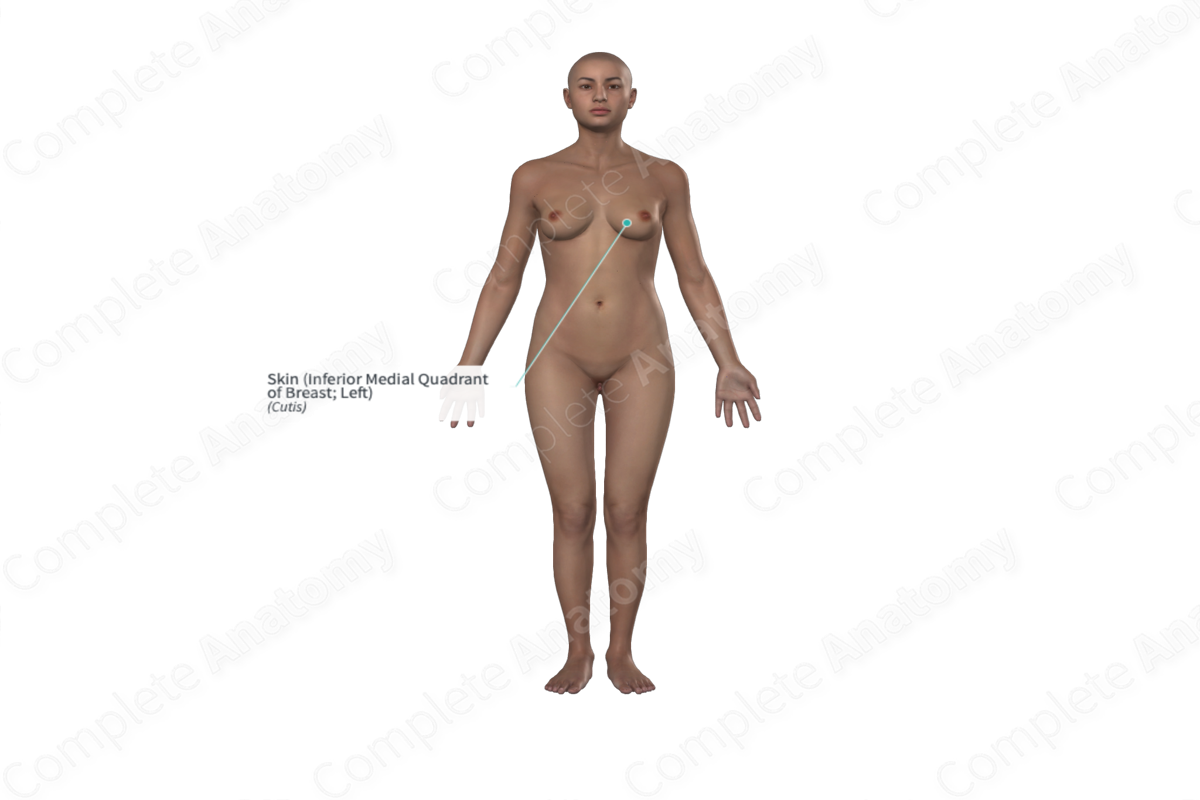
Structure/Morphology
The skin of the body of the breast resembles skin elsewhere in the body and contains numerous sweat and sebaceous glands and hair follicles.
At the center of the breast, at the level of the fourth intercostal space at the mid-clavicular line, the skin becomes highly pigmented at the raised nipple and surrounding areola. Both structures are referred to as the nipple-areolar complex (NAC). The skin covering the NAC is convoluted and shares similar structures; however, the nipple does not contain sebaceous glands. It does, however, hold the openings for 15–20 lactiferous ducts arranged cylindrically around the nipple. The skin of the NAC has no subcutaneous fat.
The areola contains numerous sebaceous glands and is not associated with hair follicles. The openings of the sebaceous glands can be identified as projections on the surface of the areola, tubercles of Montgomery.
Related parts of the anatomy
Function
Like skin elsewhere in the body, the skin of the body of the breast acts as a barrier against the external environment, such as microbial organisms and damage from mechanical, chemical, thermal, and UV stimuli.
Additionally, the skin of the breast has special adaptations so that it allows for the excretion of milk. The mammary glands are located within the breasts and are considered specialized accessory glands of the skin. These glands produce milk that is excreted through the nipple to the infant. Additionally, the specialized arrangement of the sebaceous glands in the areola protects the skin of the breast from irritation and cracking during breast-feeding.
List of Clinical Correlates
- Inflammatory breast cancer


